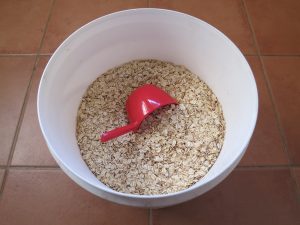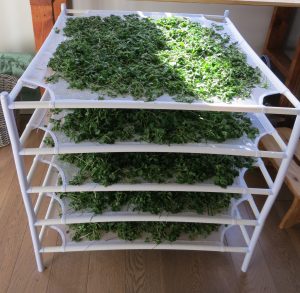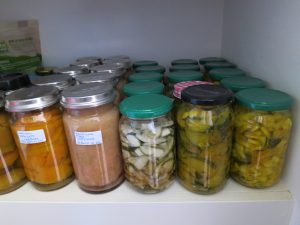Smart renters can create a buffer against food price or availability shocks and save money and waste in the process. This is easily done by buying and storing dry grains and legumes in bulk and bottling, pickling or canning fruit and vegetables.
Note: The best time to build up your food stocks is when there’s plenty to go around. In the middle of a pandemic or major crisis, buying up large amounts of foods can reduce access to food for others who need it. Conversely, having a good stock of food in advance can take pressure off other food supplies in a crisis and allow you to help out others.
- A household with a small walk-in pantry and some additional cupboard or garage space (in the case of families) can comfortably store 6-12 months-worth of dry foods, and some preserved fruit, vegetables and herbs.
- Bulk goods can be a cost effective way of buying organic grains and legumes without spending much more over non-organic food items.
- This also reduces plastic and cardboard waste.
- Old jars and 10 litre food grade buckets procured from restaurants and takeaway outlets make great food storage containers.
- Preserving fruit, vegetables and herbs is a great way to use excess summer produce from the garden in the winter months. You can even get cheap or free excess produce to preserve from other people’s gardens or fruit trees.
- All goods should be stored in a dark and dry area that is 20 degrees Celsius or cooler. Check use by dates on store bought items and rotate stock to prevent spoilage.
- Trust your instincts; if anything looks funny, smells funny, gives off a gas when opened (if it’s not meant to) or in the absence of these things, tastes strange, it should be thrown out.
Storing dry goods

- Grains and legumes can be stored for up to a year or more in a cool dry place provided that they are free of pests, have a low moisture content and don’t contain oils (which can make them go rancid).
- Use jars or food grade buckets that are clean, dry, don’t contain strong odours and have lids that seal properly. Goods in plastic packaging can be stored unopened in buckets.
- Many organic stores sell bulk foods and may negotiate a better per kilogram price for larger orders and sometimes even deliver for free.
- You may be lucky enough to have a bulk food buying scheme in your area or you could even start one with friends and neighbours.
Preserving fruits and vegetables
Here’s two simple methods for preserving fruit, vegetables and herbs using old jars. There’s heaps of information online about preserving so we are just going over the basics here:
Drying

- Herbs like mint and basil can be hung upside down in bunches whilst fruit and vegetables can be sliced thinly and dried on racks in the sun.
- Although ovens and dehydrators can be used for drying, they can use a decent amount of electricity so we prefer to use racks where appropriate.
- Dried goods should be sealed in jars and used within 6-12 months. For more information, see this helpful page from pickyourown.org.
Pickling/making jam/bottling fruit
- The methods we use are fast, easy and can be found on My Smart Garden.
- These methods work well with recycled jars and lids (provided they are in good condition)
- Whatever method you use, be sure to follow the steps for cleaning and sterilisation properly to prevent the risk of botulism which, though rare can be fatal.
- Examples of foods that we have preserved using these methods include plums, apricots, tomatoes, stewed apples and pickled zucchini.
The pantry is like your food bank that can be a help if food or money shortages occur or is just a great way to put yours or someone else’s excess produce to good use in winter. And by using jars and food grade buckets, your storage is cheap and easily moveable.
Further Reading:
[1] https://www.pickyourown.org/dryingfoods.htm [2] https://mysmartgarden.org.au/resources/food/the-art-of-preserving/